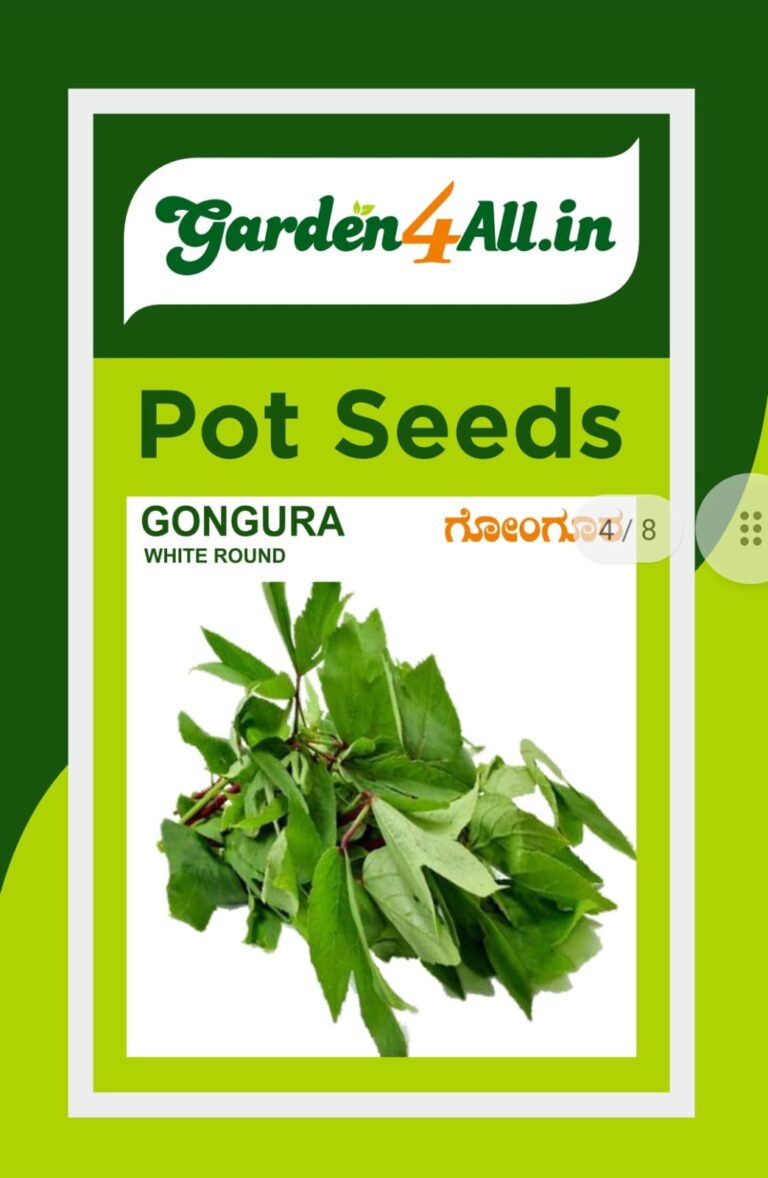Gongura Seeds
Growing Gongura from seeds is relatively easy and rewarding, especially if you enjoy its tangy flavor in traditional dishes. The plant thrives in warm climates with plenty of sunlight and minimal care. By following these steps, you can enjoy a fresh supply of Gongura leaves for your pickles, curries, and soups right from your garden.
- Estimated Delivery : Up to 3 business days
- Free Shipping & Returns : On all orders over ₹550 in Bangalore
Gongura seeds (Hibiscus sabdariffa), also known as Roselle, is a popular leafy green used in many Indian dishes, especially in Andhra Pradesh cuisine. With its tangy, sour flavor and nutrient-rich profile, Gongura is a favorite in pickles, curries, and chutneys. If you’re interested in growing Gongura from seeds, here’s a comprehensive care guide:
1. Seed Selection
- Varieties: Gongura has two main varieties:
- Green-stemmed: Milder, less sour.
- Red-stemmed: Tangier, commonly used in pickles.
- Source: Purchase high-quality seeds or collect them from mature plants.
2. Planting Time
- Warm Weather: Gongura thrives in warm climates, so it’s best to plant it in spring or early summer when temperatures are consistently above 70°F (21°C).
- Tropical/ Subtropical Regions: In these climates, Gongura can be grown year-round.
3. Soil Preparation
- Well-Draining Soil: Use rich, well-draining soil with added organic matter. Sandy loam or loamy soil works best.
- Soil pH: The ideal pH range is between 6.0 and 6.8.
4. Seed Sowing
- Depth: Sow the seeds about ¼ to ½ inch deep into the soil.
- Spacing: Leave 12-18 inches between seeds to give each plant room to grow.
- Watering: Keep the soil consistently moist but avoid waterlogging.
5. Germination
- Time: Gongura seeds typically germinate within 7-14 days, depending on temperature and soil conditions.
- Sunlight: Place seedlings in full sunlight, as Gongura needs at least 6-8 hours of direct light daily.
6. Watering and Care
- Consistent Moisture: Water regularly to maintain moisture in the soil, but ensure it drains well to avoid soggy conditions.
- Mulching: Apply mulch around the plants to help retain moisture and suppress weeds.
7. Fertilizing
- Organic Fertilizer: Use compost or a nitrogen-rich organic fertilizer for optimal leaf growth.
- Feeding Frequency: Fertilize every 4-6 weeks during the growing season.
8. Pests and Diseases
- Common Pests: Aphids, whiteflies, and leaf miners may target Gongura. Inspect the plant regularly and treat any infestations with neem oil or insecticidal soap.
- Root Rot: To avoid fungal diseases like root rot, ensure the soil drains well and avoid overwatering.
9. Harvesting
- Time: Leaves are typically ready for harvesting within 60-70 days after planting.
- Regular Harvesting: Picking leaves regularly encourages continuous growth. Start harvesting when the plant is about 12-18 inches tall.
10. Seed Saving
- Collect Seeds: Allow the pods to dry on the plant, then collect and store seeds in a cool, dry place for future planting.
Conclusion
Growing Gongura from seeds is simple and rewarding, especially for fans of its distinct tangy flavor in traditional dishes. With the right conditions, including warm temperatures, full sunlight, and proper care, you can enjoy a fresh supply of this nutrient-packed leafy green from your own garden.








Reviews
There are no reviews yet.